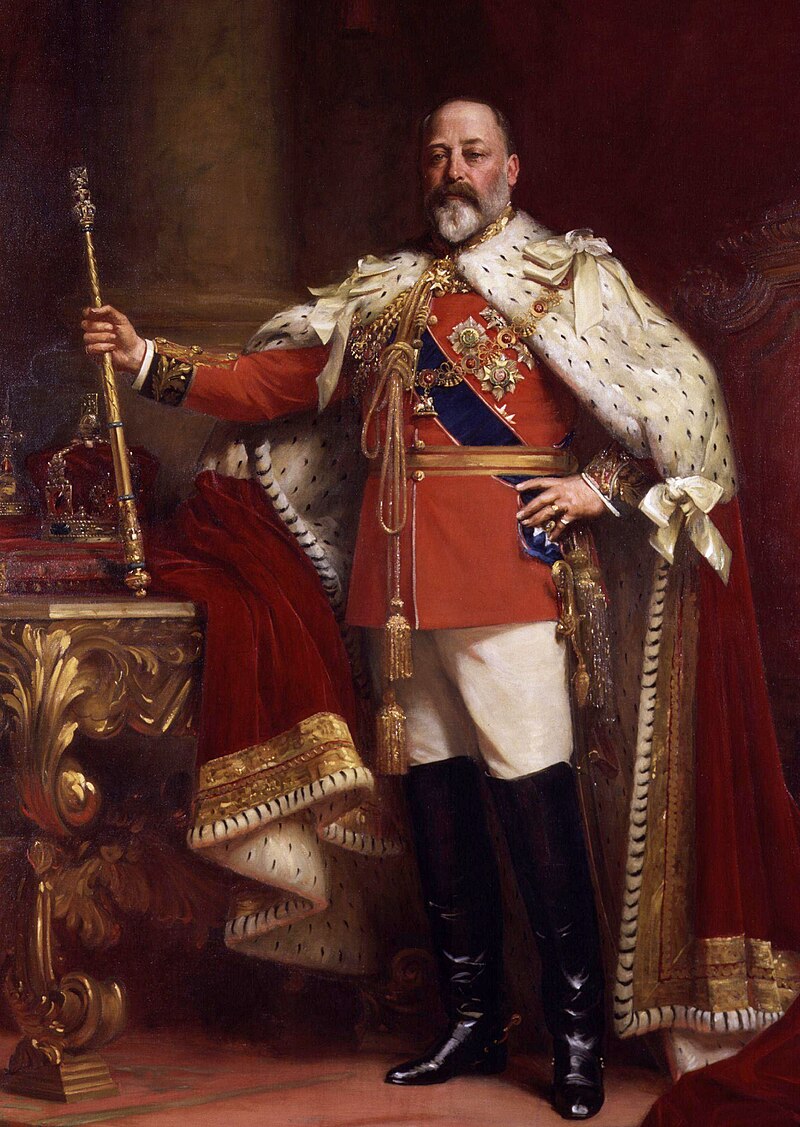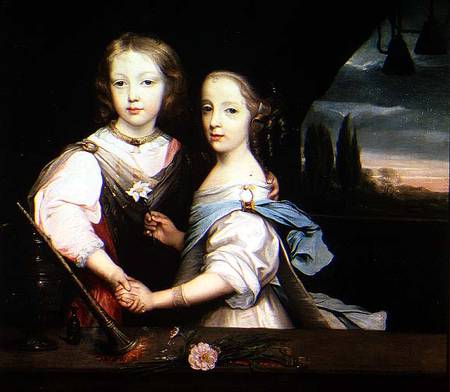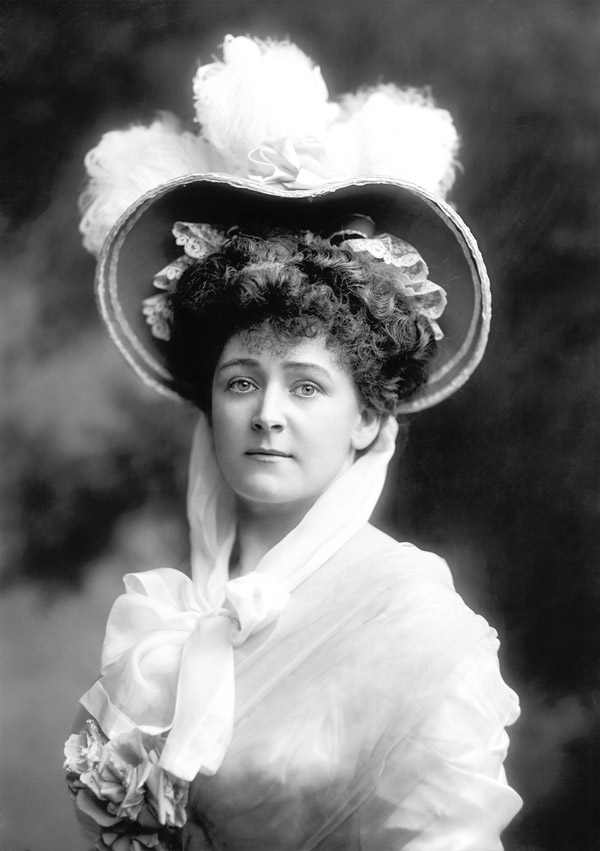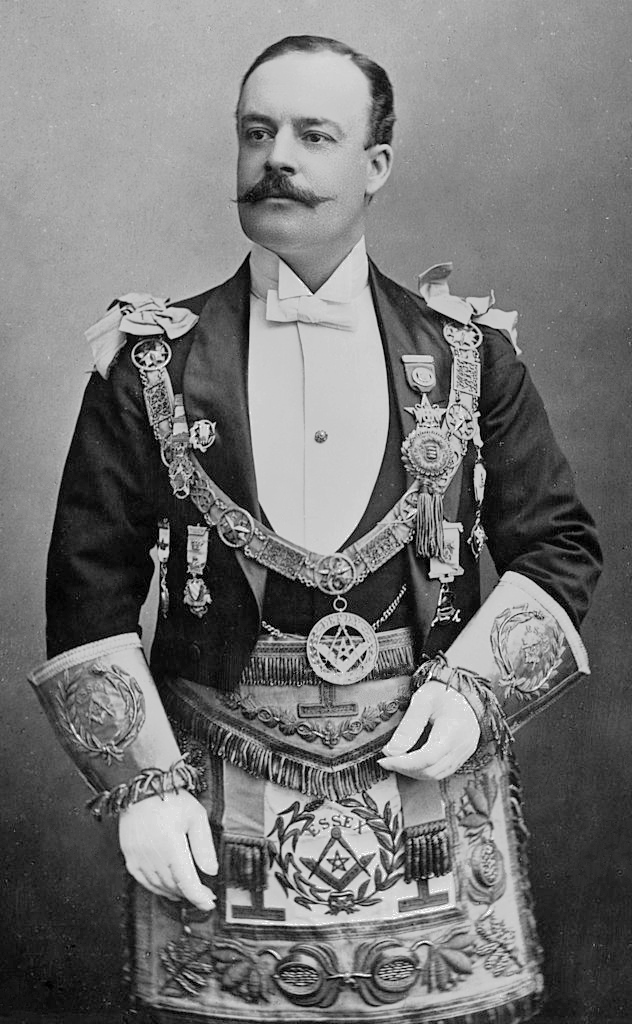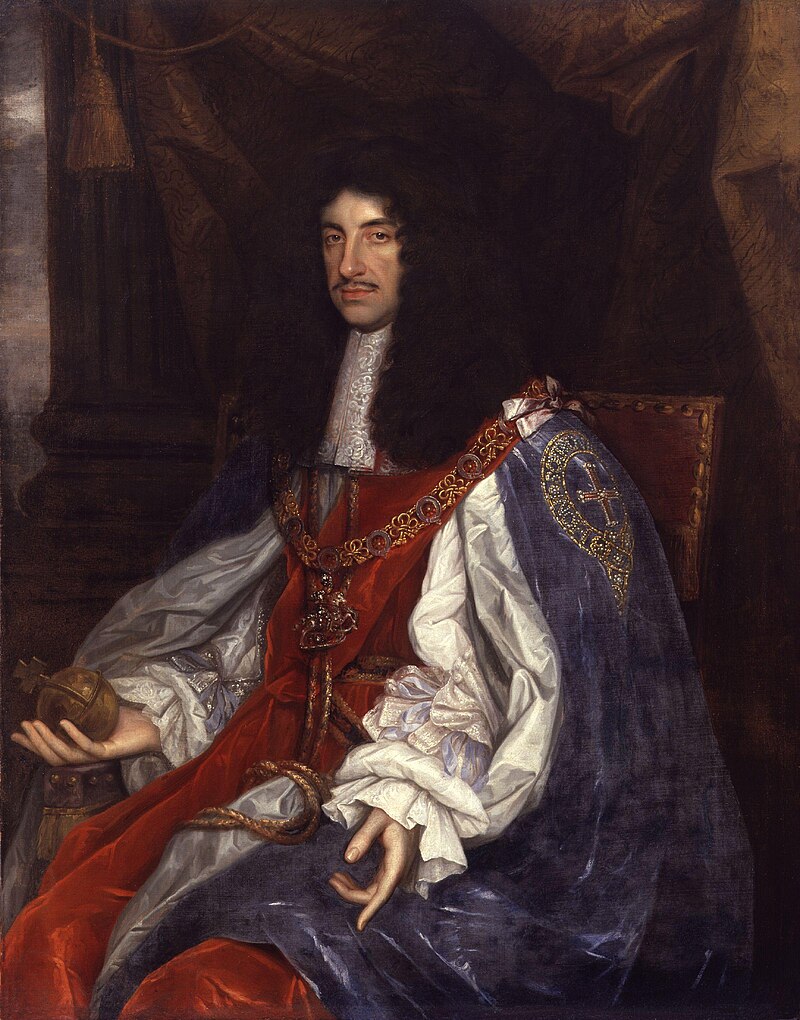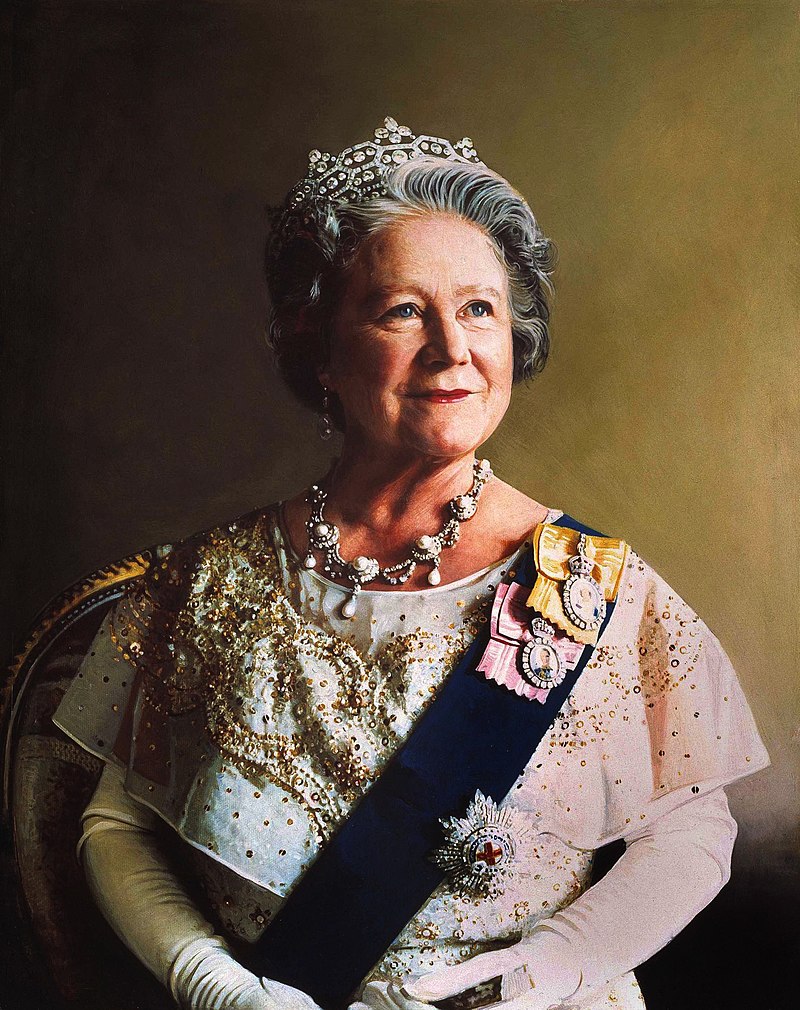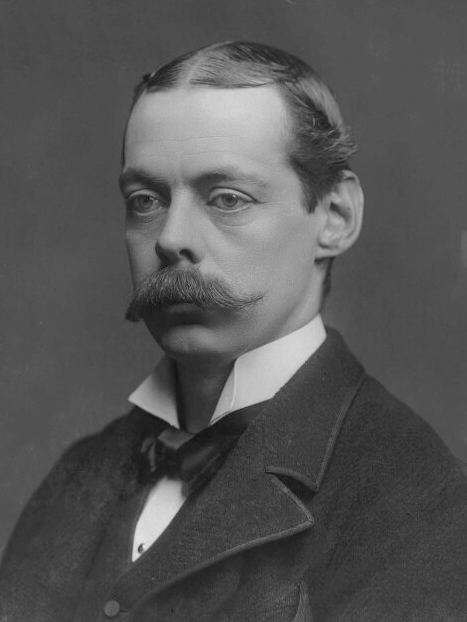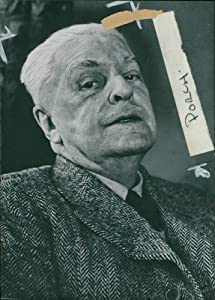by Susan Flantzer © Unofficial Royalty 2020

Elizabeth Hamilton, Countess of Orkney; Credit – Wikipedia
Born Elizabeth Villiers, she was the first cousin of another royal mistress, Barbara Palmer, 1st Duchess of Cleveland, born Barbara Villiers, a mistress of King Charles II of England. Their fathers were brothers. Elizabeth was born in 1657, one of the eight children of Colonel Sir Edward Villiers, an English politician and military officer from the powerful Villiers family, and Frances Howard, daughter of Theophilus Howard, 2nd Earl of Suffolk.
Elizabeth had seven siblings:
- Anne Villiers (circa 1651 – 1688) married William Bentinck, 1st Earl of Portland, had five daughters and two sons
- Barbara Villiers (1654 – 1708) married John Berkeley, 4th Viscount Fitzhardinge, had two daughters; Barbara was a lady-in-waiting to Queen Anne and governess to her son Prince William, Duke of Gloucester.
- Edward Villiers, 1st Earl of Jersey (1656 – 1711) married Barbara Chiffinch, had two sons and one daughter. Edward was Master of the Horse to Queen Mary II, Lord Chamberlain to King William III and Queen Anne, Ambassador at The Hague, Ambassador in Paris, Secretary of State for the Southern Department, and one of the Lords Justices of England.
- Katherine Villiers, married (1) Louis James Le Vasseur, Marquis de Puissar (2) William Villiers
- Henry Villiers (died 1707), married ? , had two children
- Mary Villiers (died 1753), married William O’Brien, 3rd Earl of Inchiquin, had four sons and two daughters
- Henrietta Villiers (died 1720) married John Campbell, 2nd Earl of Breadalbane and Holland, had one son and two daughters
In 1660, King Charles II’s brother James, Duke of York, the future King James II, married Anne Hyde. Elizabeth’s mother, Frances Villiers, was appointed governess to James and Anne’s children. Although they would have eight children, all but two, the future Queen Mary II and the future Queen Anne, died in infancy or early childhood. In 1677, 15-year-old Mary married William III, Prince of Orange, her first cousin, the son of her paternal aunt Mary, Princess Royal. Frances Villiers used her position to secure positions in the future Queen Mary II’s household for her daughters. Elizabeth, along with her sisters Anne and Katherine, were among the maids of honor who accompanied Mary to The Hague in the Dutch Republic, now in the Netherlands, to serve the new Princess of Orange.

The future Queen Mary II, 1677; Credit – Wikipedia
Elizabeth Villiers was not considered to be a beauty. She moved awkwardly, had a bad complexion, and a squint, perhaps from nearsightedness, but she was witty, intelligent, and an excellent conversationalist. In 1679, when William III, Prince of Orange made his first advances to Elizabeth, she tried to discourage him. However, by 1680, Elizabeth was his mistress, rumors of the affair reached Paris, and Mary was probably aware of her husband’s relationship with Elizabeth.

The future King William III of England, 1680s; Credit – Wikipedia
In 1685, Mary’s father, now King James II of England, hoping to break up his daughter’s marriage with the Prince of Orange, had encouraged others to relay gossip from Mary and William’s household to him. Through the meddling of King James II, Elizabeth and William’s affair became public knowledge, and Elizabeth was sent back to England. To stop the rumors in England, Elizabeth’s father begged the Prince and Princess of Orange to allow Elizabeth to return to The Hague. Elizabeth was permitted to return, but Mary refused to receive her. Elizabeth then went to live with her sister Katherine, who had married and settled in The Hague. William Bentinck, 1st Earl of Portland, a favorite of the Prince of Orange as well as the husband of Elizabeth’s sister Anne, had forbidden his wife to socialize with her sister Elizabeth. Meanwhile, the affair between Elizabeth and William III, Prince of Orange continued and was to last until 1695, a total of fifteen years.
William and Mary became King William III and Queen Mary II, joint rulers, in 1688, after King James II was deposed in the Glorious Revolution. Elizabeth returned to London and lived for a while with her sister Katherine. Eventually, Elizabeth moved into lodgings close to Kensington Palace, where William and Mary had settled, and she resumed seeing William. As before, the affair was conducted discreetly.
On December 28, 1694, 32-year-old Queen Mary II died from smallpox. The same disease had killed both of William’s parents. William was devastated by Mary’s death and said “from being the happiest” he was “now going to be the miserablest creature on earth.” William continued to reign alone until his death in 1702 when he was succeeded by Mary’s sister and his first cousin Anne.
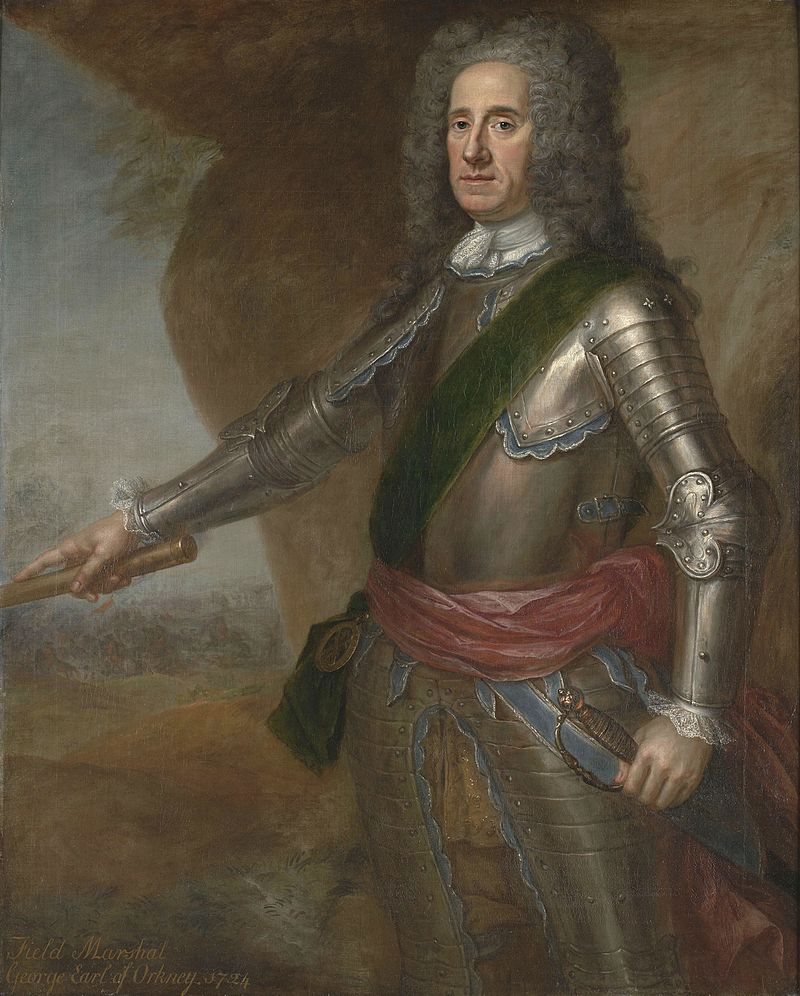
George Hamilton, !st Earl of Orkney; Credit – Wikipedia
Within a year of Mary’s death, William ended his relationship with Elizabeth Villiers, motivated by the wishes of his wife expressed before her death. He arranged for Elizabeth to marry one of his regimental commanders and thereafter ignored her. On November 25, 1695, Elizabeth married her second cousin, George Hamilton, Brigadier General of the Royal Scots, the son of William Douglas-Hamilton, 1st Earl of Selkirk and Anne Hamilton, 3rd Duchess of Hamilton. George Hamilton was quickly created Earl of Orkney, Viscount Kirkwall, and Lord Dechmont. He was also appointed Governor of Virginia, a lucrative appointment, however, he installed a deputy to attend to business in Virginia, and he never needed to go to Virginia.
Elizabeth and George had three daughters:
- Lady Anne Hamilton, 2nd Countess of Orkney in her own right (1696 – 1756), married her cousin William O’Brien, 4th Earl of Inchiquin, had four sons and four daughters
- Lady Frances Hamilton (circa 1700 – 1772), married Thomas Lumley-Saunderson, Earl of Scarbrough, had two sons and three daughters
- Lady Henrietta Hamilton (died 1732), married John Boyle, 5th Earl of Cork, had two sons and one daughter
Both Elizabeth and her husband George went from serving the Stuart monarchs to serving the Hanoverian monarchs. George was a Lord of the Bedchamber to King George I and Governor of Edinburgh Castle in Scotland. He also sat in the House of Lords as a Scottish representative peer and was the first British Army officer to be promoted to the rank of Field Marshal.

Cliveden; Credit – By WyrdLight.com, CC BY 3.0, https://commons.wikimedia.org/w/index.php?curid=4404784
Elizabeth remained at the center of royal activities and kept up her friendship with politicians who continually valued her opinions. George and Elizabeth entertained both King George I and King George II at their country seat of Cliveden in Buckinghamshire, England, which had been acquired by Elizabeth’s kinsman George Villiers, 2nd Duke of Buckingham in 1666 and was purchased by George Hamilton in 1696.

Taplow Court; Credit – Wikipedia
Elizabeth Hamilton, Countess of Orkney, died on April 19, 1733, aged 76, at her London home in Albemarle Street. She was buried at Taplow Court, an Elizabethan manor house owned by her husband, in Taplow, Buckinghamshire, England. Her husband, George Hamilton, 1st Earl of Orkney, survived her by four years, dying on January 29, 1737, at the age of 70. He was buried with his wife, Elizabeth.
This article is the intellectual property of Unofficial Royalty and is NOT TO BE COPIED, EDITED, OR POSTED IN ANY FORM ON ANOTHER WEBSITE under any circumstances. It is permissible to use a link that directs to Unofficial Royalty.
Works Cited
- En.wikipedia.org. 2020. Edward Villiers (1620–1689). [online] Available at: <https://en.wikipedia.org/wiki/Edward_Villiers_(1620%E2%80%931689)> [Accessed 26 September 2020].
- En.wikipedia.org. 2020. Elizabeth Hamilton, Countess Of Orkney. [online] Available at: <https://en.wikipedia.org/wiki/Elizabeth_Hamilton,_Countess_of_Orkney> [Accessed 26 September 2020].
- En.wikipedia.org. 2020. George Hamilton, 1St Earl Of Orkney. [online] Available at: <https://en.wikipedia.org/wiki/George_Hamilton,_1st_Earl_of_Orkney> [Accessed 26 September 2020].
- Flantzer, Susan, 2016. King William III Of England. [online] Unofficial Royalty. Available at: <https://www.unofficialroyalty.com/king-william-iii-of-england/> [Accessed 26 September 2020].
- Genealogics.org. 2020. Elizabeth Villiers. [online] Available at: <https://www.genealogics.org/getperson.php?personID=I00059439&tree=LEO> [Accessed 26 September 2020].
- Van Der Kiste, J., 2003. William And Mary. Thrupp: Sutton Publishing.








